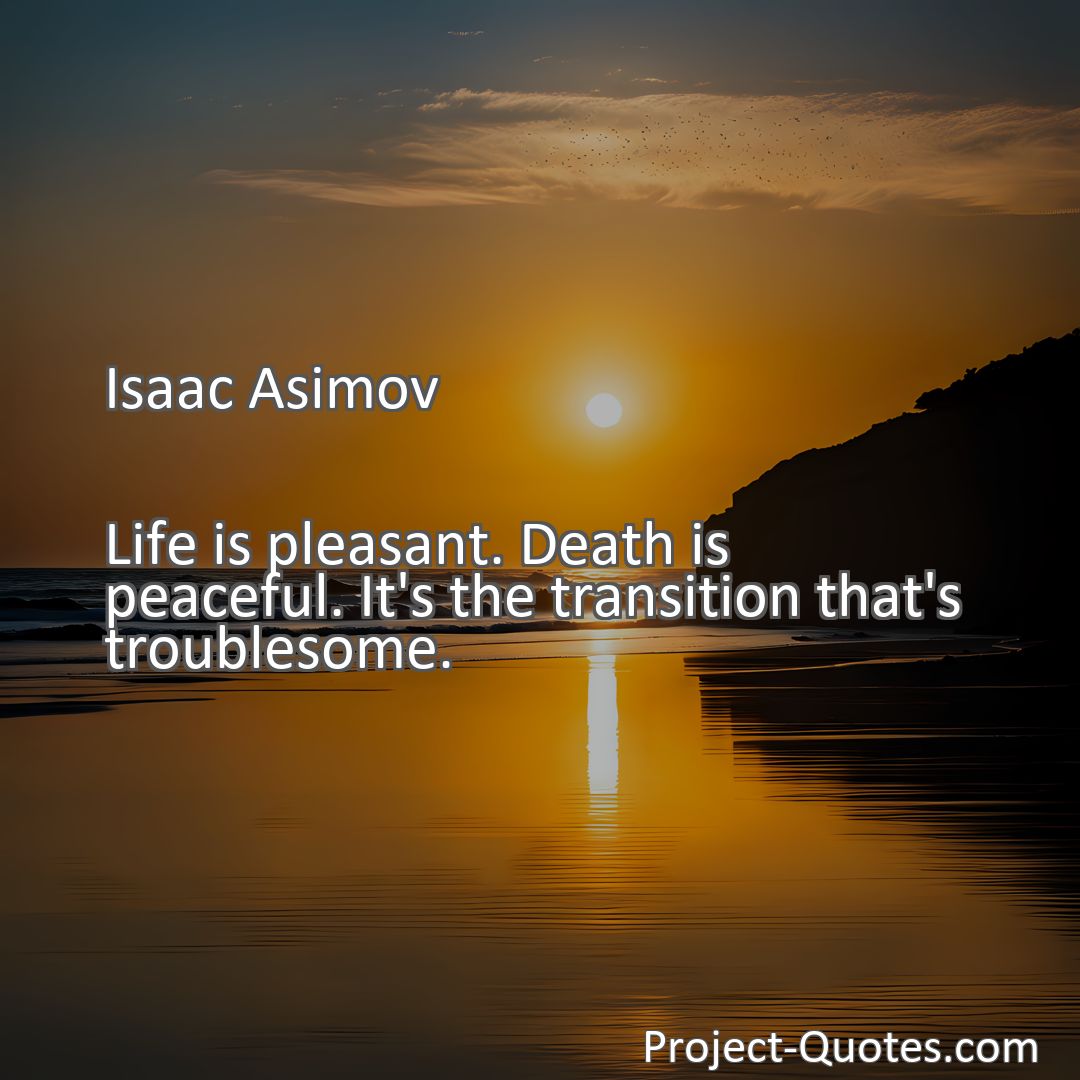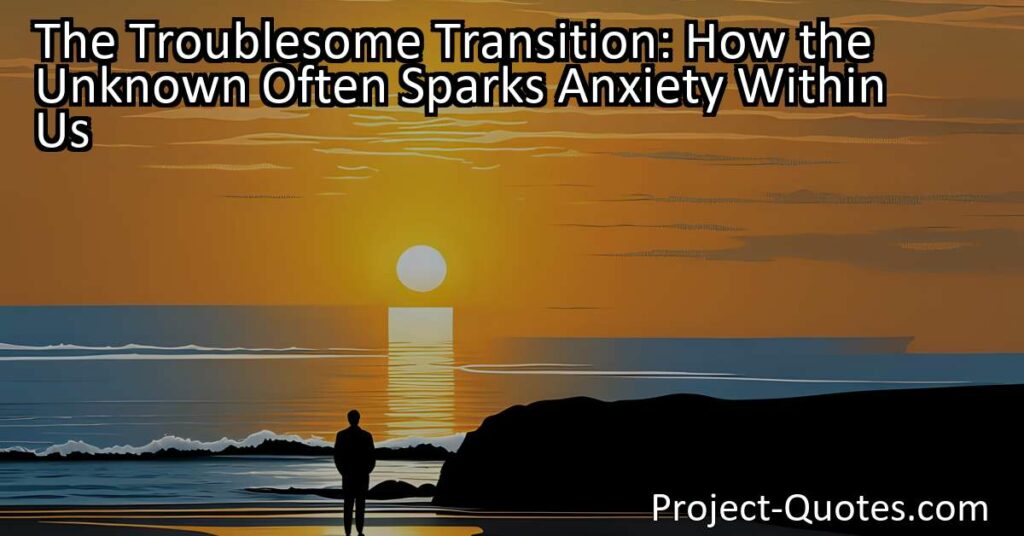Life is pleasant. Death is peaceful. It’s the transition that’s troublesome.
Isaac Asimov
The Troublesome Transition: How the Unknown Often Sparks Anxiety Within UsIsaac Asimov’s quote, “Life is pleasant. Death is peaceful. It’s the transition that’s troublesome,” captures the uncertainties and fears that arise when we ponder the journey between life and death. This engaging summary explores the fragility of life, the joys it brings, and the lingering uncertainties surrounding death and the afterlife. It emphasizes how the unknown often sparks anxiety within us, making the transition between life and death troublesome, and how beliefs, experiences, and support can provide solace during this existential struggle.
Table of Contents
Meaning of Quote – Life is pleasant. Death is peaceful. It’s the transition that’s troublesome.
Life is a beautiful journey filled with remarkable experiences, but ultimately, death is the quiet and serene end that awaits us all. However, it is the transition between life and death that often poses challenges and uncertainties. Renowned author Isaac Asimov once wisely said, “Life is pleasant. Death is peaceful. It’s the transition that’s troublesome.” These profound words resonate with the complex emotions and uncertainties that surround the inevitable change from existence to non-existence.
When pondering the quote, one can’t help but reflect on the fragility of life itself. From the moment we are born, we embark on an incredible journey, navigating through different stages filled with ups and downs, joyous moments and heart-wrenching trials. Life presents us with countless opportunities for growth, love, and laughter. It is during these moments that we truly immerse ourselves in the pleasantness of life, cherishing each precious second.
As we build relationships, pursue passions, and strive for personal and professional fulfillment, life feels full of possibilities. The warmth of the sun on our skin, the sound of laughter echoing through a communal space, and the feeling of accomplishment after overcoming a challenge these are the moments that make life pleasant. They remind us of our shared human experience, our connection to one another, and the beauty that surrounds us.
Despite the joys and pleasures that life brings, the inevitability of death looms over us. Asimov’s perspective on death as a peaceful state encourages us to consider it as both a natural and necessary part of existence. In death, the trials and tribulations of life cease to exist, offering a respite from the rollercoaster of emotions that every individual experiences throughout their lifetime. It is a state of tranquility, where peace reigns supreme.
Nevertheless, when we contemplate the transition between life and death, uncertainty and fear often arise. The transformative nature of this transition can be troublesome, leaving us apprehensive and wondering what lies beyond the veil of life. The unknown often sparks anxiety within us, provoking questions about the nature of the afterlife or what it means to cease existing.
Religious and philosophical beliefs have sought to provide solace and understanding in the face of such uncertainties. Various religions offer explanations of what happens after death, with concepts such as heaven, reincarnation, or a final state of enlightenment. Philosophy delves into questions of immortality, the essence of the soul, and the impact of our actions during life. These diverse perspectives attempt to ease the concerns surrounding the transition, providing comfort and hope to those grappling with its mysteries.
Yet, even with the array of spiritual and intellectual teachings, the ultimate truth about life’s transition to death remains elusive. Each person grapples with this existential quandary in their own unique way, guided by personal beliefs and experiences. It is this very struggle that makes the transition between life and death troublesome; it presents us with questions that may never truly be answered.
Furthermore, the transition can also be fraught with physical and emotional challenges. Aging, illness, and the decline of bodily functions may lead individuals to confront the inevitability of death with a sense of fear or sadness. Similarly, witnessing the decline or loss of loved ones can also evoke feelings of grief and helplessness. These tumultuous emotions further emphasize the complexities of the transition, underscoring Asimov’s statement.
In conclusion, Isaac Asimov’s quote, “Life is pleasant. Death is peaceful. It’s the transition that’s troublesome,” encapsulates the myriad emotions and uncertainties that arise when contemplating the journey between life and death. Life, with its joys and tribulations, provides us with a myriad of experiences that make it pleasant and worth living. Death, on the other hand, is portrayed as a peaceful state, free from the challenges of existence. However, the transition between these two states presents us with numerous uncertainties and concerns. It is through our individual beliefs, experiences, and the support of others that we find solace and navigate this troublesome transition. As we continue to navigate life’s unpredictable path, let us embrace its joys, confront its challenges, and contemplate the mysteries that lie beyond the transition called death.
I hope this quote inspired image brings you hope and peace. Share it with someone who needs it today!


